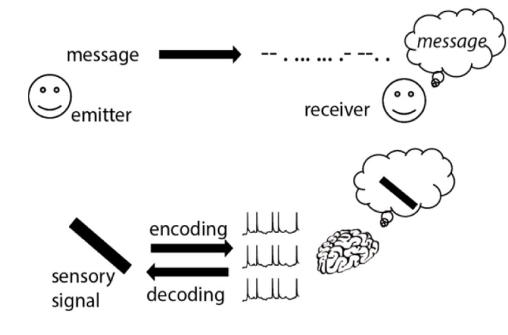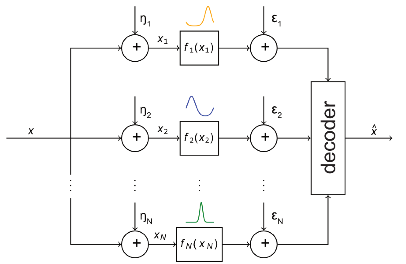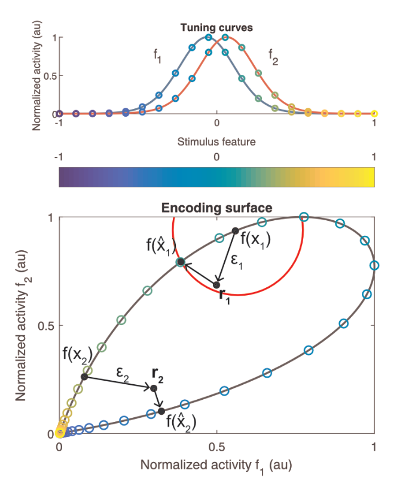|
The aim of this case study is to gain novel insights into computational principles of representing and processing neural information in the brain. Despite a relatively large body of experimental data, there is no well-established theory how populations of neural cells in the brain reliably encode information about complex environmental stimuli and how neural network circuits are optimized to make this information behaviourally relevant. The problem is non-trivial since spiking biological neurons are noisy and diverse. At the same time, information about environment/tasks is typically inherently imprecise, high-dimensional and multi-modal. To enhance our understanding how human brain deals with fundamental challenges in perceiving the world and making sense of abundant sensory input to obtain information necessary for executing tasks, making decisions, we employ an information theoretic approach. Our ambition is to build a theoretical framework that will not only contribute to neuroscience but will also help us constrain our neuro-cognitive models for goal-directed behaviour and decision making, developed as part of WP4.

This case study is divided into several lines of investigation:
1) Bandwidth expansion in the brain
Ultimately the number of neurons responding to a class of stimuli or tasks is much higher than their intrinsic dimensionality, which implies redundancy and correlated structure. Neuronal response characteristics are typically described in terms of so-called tuning curves and despite the fact that their impact on encoding/decoding stimuli has been heavily scrutinized, there is no normative theory for ensemble coding, i.e. how neurons collectively encode information given intrinsic noise, variability and input correlations. We aim to examine the suitability of an information/communication theoretic framework built on the concept of bandwidth expansion for understanding the consequences of noise and different shapes of tuning curves, and thus explain how neurons and their networks in different brain regions are built to minimize the risk of misleading interpretation of abundant input signals of diverse origins reaching the brain through our senses.
 
2) Processing sensory information in recurrent and feed-forward neural network architectures; the role/implications of inhibitory circuitry
3) Task information and mixed selectivity of neurons in higher-order cortical networks
| 